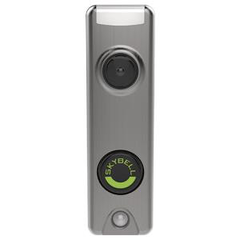Alarm Grid Video Recap: November 5th
Posted By Michael GorisAlarm Grid is here again with its latest video recap! We have a lot of videos featuring touchscreen keypads this week, though some other topics are covered as well. As usual, Jorge, Jarrett, and yours truly are all represented. Let's check out the latest Alarm Grid videos from the team!
Pairing a 2GIG SP2 with the 2GIG GC3e
Jarrett helps you pair a 2GIG SP2 Keypad with a 2GIG GC3e Security System. Adding the SP2 Keypad will provide you with a secondary on-site location for controlling your GC3e System. You might consider installing it by your front door, by your garage door, by your back door, or in your master bedroom. Remember that the SP2 is for security functions only, and it cannot perform automation commands. The wireless keypad pairs with the GC3e through WIFI or by using an Access Point (AP).
How to Tell If a Keypad Has an RF Receiver Built-In
Jorge explains how you can determine if your alarm system keypad has a built-in RF receiver. It can be easy to confuse a keypad like the Honeywell 6160RF, which has an integrated receiver, with a similar-looking keypad that does not, such as the Honeywell 6160. If you have a hardwired alarm system, then the benefit of adding a wireless receiver is that you will be able to begin pairing compatible wireless sensors with the system. And if your keypad has a built-in receiver, then you won't need to add a standalone receiver unit.
Remove a PG9914 From its Mounting Bracket
Jarrett shows you how to remove a DSC PG9914 PowerG Motion Detection Sensor from its mounting bracket. Like all motion sensors, properly positioning and mounting the PG9914 is very important for achieving the results you want. If it is positioned improperly, then it may cause false alarms, or it may not activate when movement is present in the area. Proper mounting is also crucial if you intend to use the motion sensor for pet immunity. The PG9914 supports pet immunity of up to 85 pounds.
Determining if Your Keypad is Alphanumeric
Jorge explains the difference between an Alphanumeric Keypad like the Honeywell 6160 and a Fixed English Keypad like the Honeywell 6150. Both keypad types are good for arming and disarming and bypassing sensors. But only an Alphanumeric Keypad is good for menu-driven programming. This is because an Alphanumeric Keypad will display the relevant information as you move through the menus. If you try to program on a Fixed English Keypad, you will basically be operating blindly.
Checking the ECP and RIS Address on the Tuxedo Touch
Jorge teaches you how to check the ECP Address and the RIS Address for a Honeywell Tuxedo Touch Keypad. These settings are important when you go to set up the Tuxedo Touch with a Honeywell VISTA Security System and Total Connect 2.0. The ECP Address is used for setting up the Tuxedo Touch as a keypad controller on the VISTA System, and the RIS Address is used for setting up the Tuxedo Touch as an automation controller on Total Connect 2.0.
Disarming Using the Tuxedo Touch Keypad
Jorge shows you how to disarm your Honeywell VISTA Alarm System by using a connected Honeywell Tuxedo Touch Keypad. Since the Tuxedo Touch is a wired touchscreen keypad controller for the system, it needs to be able to perform all the standard security functions. These include arming and disarming the system. When you are disarming, you are taking the system out of a secured state so that burglary/intrusion zones are unable to cause alarms on the system.
Bypassing Zones Using a Honeywell Tuxedo Touch Keypad
Jorge explains how to bypass zones using a Honeywell Tuxedo Touch Keypad. When the zone associated with a sensor is bypassed, that sensor is ignored by the system. In other words, the system will not provide any response if that sensor is faulted. You must bypass or restore any faulted zones prior to arming the system. Bypassing is often preferred over deleting a zone entirely, as you do not have to reprogram a zone after bypassing. You can just unbypass the zone later on and use it as normal.
Providing AC Power to an Alarm System
I explain how AC power is provided to an alarm system. AC power comes from a plug-in transformer that connects to an alarm panel using wire. The transformer takes the high-voltage power provided from the outlet, and it transforms it into low-voltage power that is suitable for powering a security system. The power travels down the wire and reaches the panel. This represents the primary power source for an alarm system. If AC power is lost, then a backup battery can keep the system running temporarily until AC power is restored.










